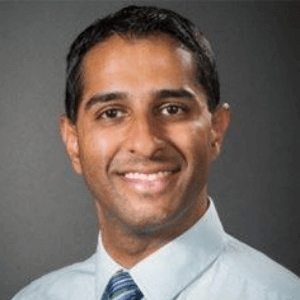Title : Clinical outcomes validate RAND/UCLA appropriateness criteria algorithm for anatomic TSA to atreamline the clinical decision-making process
Abstract:
Background: A recent study used the RAND/UCLA method to develop anatomic TSA (aTSA) appropriateness criteria. The purpose of our study was to determine how patient-reported outcome measures (PROMs) vary based on appropriateness.
Methods: Clinical data from a multicenter database identified patients who underwent primary aTSA. Patients were classified as “appropriate,” “inconclusive,” or “inappropriate,” using a modified version of an appropriateness algorithm, which accounted for age, rotator cuff status, mobility, symptomatology, and Walch classification. Multiple pre- and postoperative scores were analyzed using Pearson-Chi-Square and one-way ANOVA. Postoperative complications were also analyzed.
Results: 390 patients (follow-up 48.1 months) were included. 97 (24.9%) were classified as appropriate, 218 (55.9%) inconclusive, and 75 (19.2%) inappropriate. All groups achieved significant improvement in mean PROM scores postoperatively. “Appropriate” patients experienced significantly greater improvement in VAS and ASES compared to “inconclusive” and “inappropriate”. The appropriate group had a significantly greater proportion of patients who achieved MCID (95.8%) and SCB (92.6%). Overall, 13 patients had postoperative complications. No significant differences in postoperative complications among classifications were found.
Conclusions: Our data clinically validates an aTSA appropriateness criteria algorithm, allowing for more rapid and reliable determination of aTSA candidacy. “Appropriate” patients were more likely to achieve MCID and SCB for ASES scores compared to “inappropriate” patients. Among “appropriate” patients who did not achieve SCB, 50% of them had a postoperative complication. This was a significantly higher proportion of postoperative complications among those that did not achieve SCB across all three groups. Only 7.1% of patients who did not achieve SCB in the inappropriate group had a postoperative complication. Thus, it can be inferred that the failure to reach SCB in the appropriate group was likely due to a postoperative complication, whereas for patients deemed “inappropriate,” failure to reach SCB may be secondary to factors accounted for within our algorithm.
Level of Evidence: III, retrospective cohort study
Keywords: Primary Anatomic Total Shoulder Arthroplasty, RAND/UCLA Appropriateness Criteria, Patient-reported Outcome Measures
What will the audience learn from your presentation?
Indications for TSA have become unclear given the rapid increase in utilization of RSA in recent years. We validated an algorithm designed via the RAND/UCLA method to determine TSA candidacy and appropriateness. Our study aims to present a means by which orthopaedic providers can streamline the clinical decision-making process with regards to TSA candidacy.




